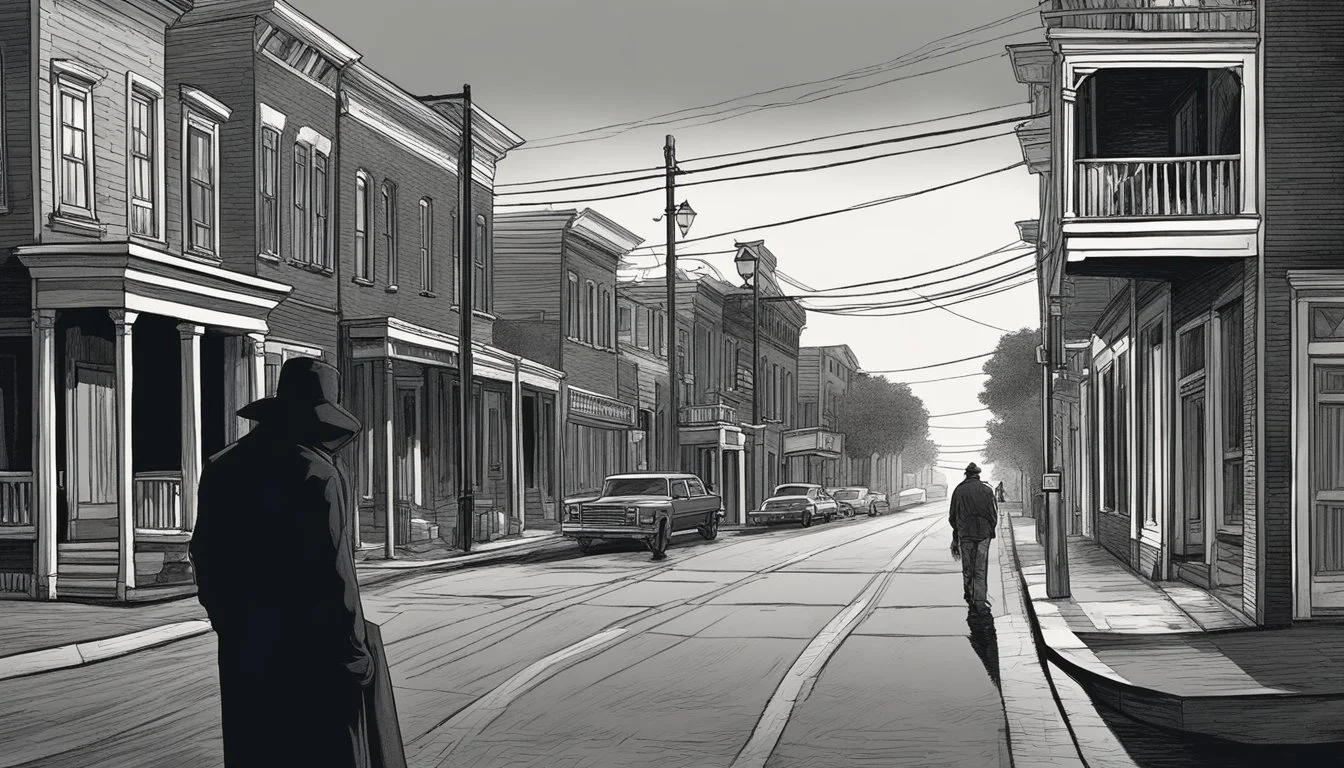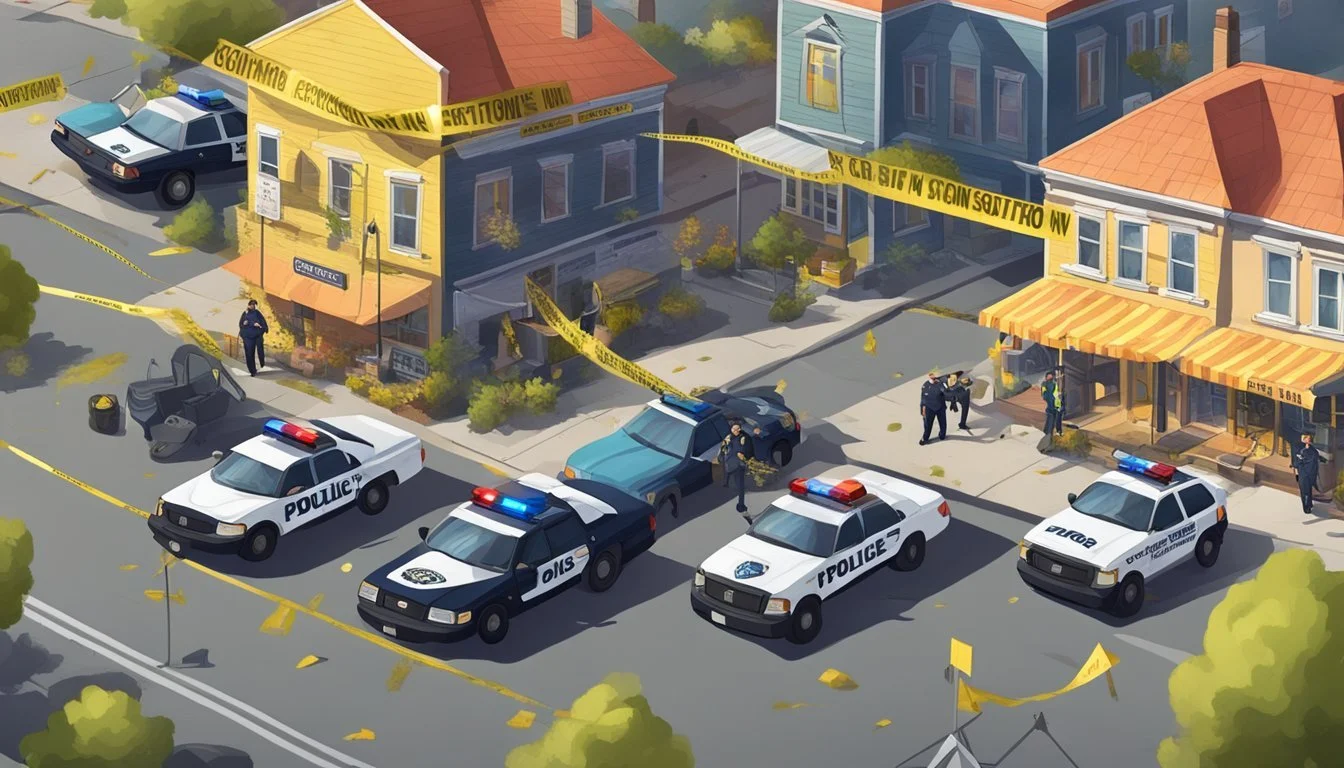Augusta's Nightmare: Reinaldo Rivera's Southern Killing Spree
Serial Killer Terrorizes Georgia City
Between 1999 and 2000, Augusta, Georgia experienced a wave of terror as Reinaldo Rivera committed a series of brutal crimes. The Spanish-born American targeted young women in the Augusta metropolitan area, leaving the community shaken and fearful. Rivera's killing spree claimed the lives of four women across Georgia and South Carolina, with additional attacks that fortunately did not result in fatalities.
Law enforcement agencies scrambled to catch the perpetrator as residents lived in constant apprehension. Rivera's ability to move undetected through everyday places in Augusta added to the community's unease. Local businesses unknowingly served the killer, highlighting how a predator could blend into normal society.
The arrest of Reinaldo Rivera in 2000 brought an end to his reign of terror. He was convicted for one of the murders and sentenced to death in Georgia. Rivera remains on death row, though he recently claimed innocence for the first time in nearly 16 years. His case continues to captivate true crime enthusiasts and serves as a chilling reminder of a dark chapter in Augusta's history.
Profile of Reinaldo Rivera
Reinaldo Rivera, a Spanish-born American, became one of the most notorious serial killers in Augusta, Georgia. His crimes shocked the community and left a lasting impact on the region.
Biographical Background
Reinaldo Javier Rivera was born on September 13, 1963, in Spain. He later moved to the United States, settling in the Augusta metropolitan area. Rivera's criminal activities primarily took place between 1999 and 2000.
During this period, he targeted young women in and around Augusta. Rivera's victims were abducted, raped, and murdered in a brutal spree that terrorized the local population.
Prior to his crimes, Rivera had attended the University of South Carolina in the early 1990s. This educational background gave him familiarity with the region where he would later commit his atrocities.
Psychological Profile
Rivera exhibited traits common to serial killers, including a lack of empathy and a desire for control over his victims. His method of operation involved carefully selecting and stalking his targets before attacking.
Experts believe Rivera may have been motivated by a combination of sexual sadism and a need for power. His crimes were premeditated and showed a level of planning that suggested a calculated approach to murder.
Rivera's ability to blend into society while committing heinous acts speaks to the complexity of his psychological makeup. He managed to maintain a facade of normalcy that allowed him to evade capture for an extended period.
Law enforcement eventually charged Rivera with four murders, though he remains a suspect in additional cases. His actions left a trail of devastation and sparked ongoing discussions about predatory behavior and public safety.
Chronology of Crimes
Reinaldo Rivera's killing spree terrorized Augusta, Georgia and surrounding areas from 1999 to 2000. His brutal attacks left four young women dead and at least one survivor.
First Known Attack
Rivera's first documented attack occurred on June 29, 1999. He abducted and assaulted a 17-year-old girl in Augusta, but she managed to escape. This incident marked the beginning of his violent crime spree in the area.
The survivor's description helped police create a composite sketch of the attacker. However, Rivera remained unidentified and continued his crimes.
Subsequent Murders
Rivera escalated to murder in the following months. His known victims included:
Melissa Dingess, 17, killed on July 17, 1999
Tabitha Bosdell, 17, murdered on February 10, 2000
Tiffaney Wilson, 17, killed on June 29, 2000
Marni Glista, 21, attacked on September 4, 2000 and died days later
Rivera targeted young women, often teenagers, in the Augusta metropolitan area. He would abduct, rape, and brutally murder his victims.
Capture and Arrest
Rivera's reign of terror ended on October 18, 2000. After attacking 18-year-old Chrisilee Barton, who survived, police identified Rivera as a suspect. He was arrested at his home in North Augusta, South Carolina.
During interrogation, Rivera confessed to the murders of Glista, Wilson, Bosdell, and Dingess. He provided details that only the killer would know, confirming his guilt.
Rivera's capture brought relief to the Augusta community after more than a year of fear and uncertainty. His arrest marked the end of a harrowing chapter in the region's history.
Investigation
Law enforcement agencies from multiple counties collaborated to track down the perpetrator terrorizing Augusta. Their efforts involved meticulous evidence gathering, advanced forensic techniques, and crucial breakthroughs that ultimately led to Rivera's capture.
Evidence Collection
Investigators meticulously combed crime scenes in Augusta, Aiken County, and Columbia County. They gathered physical evidence including DNA samples, fibers, and fingerprints. Witness statements were recorded, and surveillance footage was collected from nearby businesses.
Detectives created detailed timelines of each victim's last known movements. They also compiled lists of potential suspects based on descriptions and patterns of behavior.
Forensic Analysis
DNA evidence played a crucial role in linking the crimes. Forensic experts analyzed genetic material found at multiple crime scenes, confirming they were committed by the same individual.
Fiber analysis provided additional connections between victims and the perpetrator. Investigators used advanced techniques to match fibers found on victims to those in Rivera's vehicle and residence.
Ballistics experts examined bullet casings and wounds, determining the type of weapon used in some attacks.
Key Breakthroughs
A major break came when a surviving victim provided a detailed description of her attacker and his vehicle. This information led to the creation of an accurate composite sketch.
Investigators noticed similarities between the Augusta cases and unsolved crimes in neighboring Aiken and Columbia counties. This realization expanded the scope of the investigation.
The final breakthrough occurred when Rivera's wife recognized him in the composite sketch and contacted authorities. This tip led to Rivera's arrest and subsequent confession, bringing an end to his reign of terror.
Trial and Conviction
Reinaldo Rivera faced justice for his heinous crimes in a highly publicized trial. The court proceedings and subsequent sentencing determined his fate, ultimately placing him on death row.
Court Proceedings
Rivera's trial began in January 2004 in Richmond County Superior Court. Prosecutors presented compelling evidence linking him to the murders of four young women in the Augusta area. DNA evidence played a crucial role in connecting Rivera to the crimes.
The jury heard testimony from survivors who had narrowly escaped Rivera's attacks. These accounts provided chilling details of his modus operandi. Rivera's defense team attempted to argue mental illness as a mitigating factor, but this strategy proved ineffective.
After deliberation, the jury found Rivera guilty on all counts, including murder, rape, and aggravated assault.
Sentencing
Following the guilty verdict, the sentencing phase commenced. Prosecutors sought the death penalty, citing the brutal nature of Rivera's crimes and the danger he posed to society.
Victim impact statements were presented, allowing family members to express their grief and loss. The defense pleaded for leniency, but the jury remained unmoved.
On January 27, 2004, the court sentenced Reinaldo Rivera to death for the murder of Marni Glista. He received additional life sentences for his other crimes. Rivera was subsequently transferred to Georgia's death row, where he continues to await execution.
Appeals Process
Reinaldo Rivera's case has entered the complex realm of legal appeals following his conviction and death sentence. His attorneys have filed multiple challenges in an effort to overturn the verdict or reduce his punishment.
Legal Challenges
Rivera filed a petition for a writ of habeas corpus in U.S. District Court in Augusta. This legal action requires authorities to justify his detention and brings his case before a federal court. Rivera's defense team has exhausted appellate options in Georgia's state courts after his conviction for the murder of Army Sgt. Marni Glista.
The appeals process focuses on potential legal errors or constitutional violations during Rivera's trial. His lawyers may argue issues such as ineffective assistance of counsel, juror misconduct, or violations of Rivera's rights during the investigation and trial.
Current Status
As of September 2024, Rivera remains on death row while his federal appeal is pending. The appeal has been reduced to a single remaining claim, significantly narrowing the scope of his legal challenge. The federal court will review the merits of this claim to determine if it warrants further action.
Rivera's case continues to draw attention due to the severity of his crimes and the death sentence imposed. The appeals process can be lengthy, often taking years to resolve. As Rivera's legal options dwindle, his case moves closer to a final resolution in the federal court system.
Impact on the Community
Reinaldo Rivera's killing spree left an indelible mark on Augusta and the surrounding areas. Residents grappled with fear, grief, and a shattered sense of security. The community rallied to support victims' families and implemented new safety measures.
Public Reaction
News of Rivera's crimes spread rapidly, triggering widespread panic. Residents, especially young women, became hyper-vigilant. Many altered their daily routines, avoided going out alone, and purchased personal safety devices. Local media coverage intensified, with constant updates fueling both awareness and anxiety.
Community gatherings and town hall meetings became common. Citizens demanded answers from law enforcement and city officials. Neighborhood watch programs saw a surge in participation. Local businesses reported decreased foot traffic, particularly at night, as people opted to stay home.
Safety Measures
In response to the killings, Augusta officials implemented several safety initiatives:
Increased police patrols in high-risk areas
Installation of additional streetlights in poorly lit neighborhoods
Free self-defense classes offered by local gyms and community centers
Distribution of personal alarms to women in the area
Universities and colleges enhanced campus security measures. Many employers revised their late-night policies for staff working alone. Local rideshare services saw a spike in usage as people sought safer transportation options.
Memorials and Remembering the Victims
The community came together to honor Rivera's victims. Candlelight vigils drew large crowds, providing a space for collective mourning. Local artists created murals depicting the victims, serving as poignant reminders of the lives lost.
Families of the victims established scholarships in their loved ones' names. These scholarships aimed to support young women pursuing education and career goals. Annual memorial walks became a tradition, raising awareness about violent crimes and domestic abuse.
Support groups for families of violent crime victims formed, offering ongoing counseling and resources. These groups continue to advocate for victim rights and improved safety measures in the Augusta area.
In-Depth Analysis
Reinaldo Rivera's crimes sparked intense investigative efforts, widespread media attention, and comparisons to other serial killers. Law enforcement employed various techniques to track down the perpetrator, while news outlets struggled to balance public safety concerns with sensationalism.
Investigative Techniques
The Augusta Police Department utilized several advanced methods to identify and apprehend Rivera. DNA analysis played a crucial role in linking multiple crime scenes to a single suspect. Investigators also created detailed victim profiles to establish patterns in Rivera's target selection.
Geographic profiling helped narrow down potential areas where the killer might reside or work. This technique proved valuable in focusing search efforts within the Augusta metropolitan area.
Surveillance cameras and eyewitness accounts provided key leads. Detectives meticulously cross-referenced this information with vehicle registrations and local records.
The FBI's Behavioral Analysis Unit assisted by developing a psychological profile of the killer, aiding in interview strategies and suspect prioritization.
Media Coverage
Local news outlets extensively covered the Rivera case, often leading to heightened public anxiety. Television stations aired frequent updates and safety advisories for young women in the area.
Newspapers published detailed accounts of each crime, sometimes including graphic descriptions that drew criticism from victim advocates. Some outlets were accused of sensationalizing the murders to boost ratings and circulation.
Social media platforms, though less prevalent in 1999-2000, began to play a role in disseminating information and organizing community safety groups.
Law enforcement faced challenges in managing information flow to the public while maintaining the integrity of the ongoing investigation.
Comparative Cases
Rivera's crimes drew comparisons to other serial killers who targeted young women. The case shared similarities with the Green River Killer in Washington state, who also preyed on vulnerable females over an extended period.
Like Ted Bundy, Rivera used charm and deception to gain his victims' trust. However, Rivera's more localized killing spree contrasted with Bundy's cross-country murders.
The Augusta Ripper case echoed elements of the Yorkshire Ripper murders in England, particularly in how it instilled fear in a specific geographic region.
Criminologists noted that Rivera's military background aligned with patterns seen in other serial killers with service histories, such as Jeffrey Dahmer and Dennis Rader.
Conclusion
Reinaldo Rivera's reign of terror left an indelible mark on Augusta and surrounding areas. His brutal crimes against young women shocked the community and exposed vulnerabilities in public safety.
Law enforcement's persistence ultimately led to Rivera's capture and conviction. The case highlighted the importance of interagency cooperation and advancements in forensic technology.
Rivera now sits on death row, his appeals largely exhausted. For the victims' families, justice was served, though the pain of loss remains.
This case serves as a somber reminder of the need for continued vigilance and support for victims of violent crime. It also underscores the critical role of public awareness and community engagement in preventing such tragedies.
Augusta has worked to heal in the years since Rivera's arrest. The city's resilience in the face of such horror demonstrates the strength of its community bonds.
As time passes, Rivera's name fades from headlines. Yet the impact of his actions continues to influence local law enforcement practices and victim support services.
The legacy of this dark chapter in Augusta's history is a renewed commitment to public safety and a determination to protect the vulnerable.







